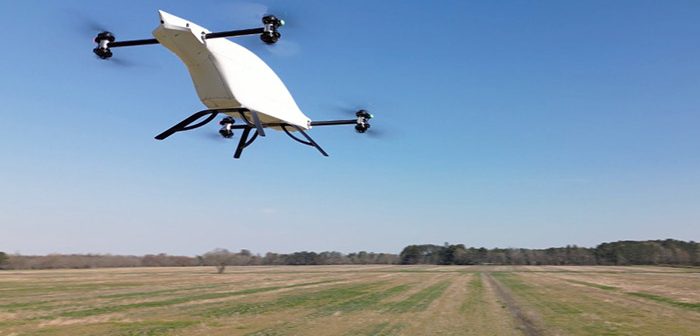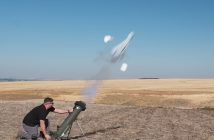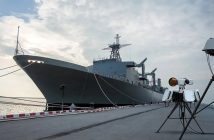
Blueflite Pty Ltd will address the growing global demand for safe and reliable storage of hydrogen fuels for unmanned aerial vehicles (UAVs) through a collaborative early-stage project supported by the Northern Territory Government. The ambitious project, which will also see Blueflite open Darwin-based premises, seeks to develop a lightweight, high-pressure, hydrogen vessel (tank) using advanced fibre placement technology pitched squarely at the underserved, long-range, UAV sector.
The collaboration will see Blueflite leverage Charles Darwin University’s innovative additive manufacturing capabilities, including using an industrial robot with advanced automated carbon fibre placement capabilities. The university’s robot is the only one of its kind in Australia and offers a significant improvement over traditional methods of composite vessel manufacture.
The university’s North Australia Centre for Autonomous Systems (NACAS) conducts integrated industry-focused research into the application of autonomous systems across industries, businesses, and other sectors in northern Australia and the Asia Pacific regions.
In 2021, NACAS secured a grant under the Federal Governments Industry 4.0 Pilot Apprenticeship Scheme to build facilities in Darwin to Additively Manufacture composite parts for the Aerospace industry. The Northern Territory Government matched those funds. The facility now houses a full additive manufacturing suite for advanced composites. The Centre is also licensed by the Civil Aviation Safety Authority to manage large tracts of uninhabited land in the Northern Territory to flight-test novel UAV technologies.
Long-range UAVs play a crucial role in numerous sectors, including medical, agricultural, services and mining industries, particularly in geographically isolated or vast regions such as the Northern Territory. In the medical field, they facilitate quick and efficient transport of medical supplies, vaccines, and even emergency medical services to remote areas, improving healthcare accessibility. In agriculture, UAVs can transform crop monitoring, precision agriculture, and pest control, leading to increased efficiency and sustainable farming practices.
Such is the growth trend in drone use that according to a recent Airservices Australia report, the number of drone flights (single take-off and landing) will increase to approximately 60.4 million by 2043, up from 1.5 million in 2024. This increase is driven primarily by drones being used for goods deliveries, an industry that is projected to grow exponentially over the next 20 years.
In all, the USD30 billion global drone market, of which long-range drones represent almost a quarter of the market, is set to grow to USD223 billion by 2033. With increasing demands for long-range flights driving interest in new forms of fuel such as hydrogen, Blueflite plans to offer a scalable solution for all manner of UAV applications. The integration of hydrogen fuel cell technology into UAVs has the potential to improve the range and efficiency of craft, as running on hydrogen rather than lithium-ion batteries is expected to increase range by 700%.
Frank Noppel, CEO of Blueflite, said the Northern Territory is the ideal location to develop, test and deploy long-range hydrogen-powered UAVs. “UAVs have the potential to shrink distances, increase services in remote areas and decarbonise last-mile transportation. In conjunction with Charles Darwin University, H3 Dynamics, and support from the Northern Territory Government, we will establish a composite hydrogen tank manufacturing capability that does not exist in Australia and integrate it into our proven UAV platform,” he said. “The long-term goal for Blueflite and our partners in Darwin is to coalesce a range of skills, knowledge and capability to position the Northern Territory as a leader in sustainable aviation and manufacturing, with ripple effects across various sectors, industries and the Top End economy.”
Working alongside Charles Darwin University’s Energy Resource Institute, the project will conduct trials for remote site hydrogen generation and filling of the locally manufactured hydrogen storage vessels. These tanks will be integrated into Blueflite’s UAVs, and flight trials will be conducted at the Darwin UAV Flight Test Range.
The project is expected to deliver AUD9.6 million in additional revenue within five years and create at least seventeen new skilled roles at Blueflite’s new Darwin facility. Blueflite’s project is the tenth business to receive co-investment through the Territory Government’s Advanced Manufacturing Ecosystem Fund (AMEF), which was launched in 2021. The AMEF has spurred manufacturing activity expecting to create up to 180 new jobs and generate up to AUD94 million for the Territory’s economy within five years.





